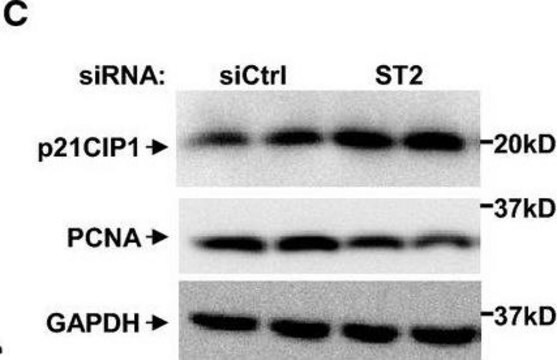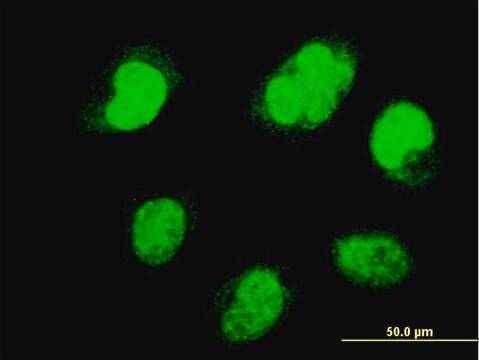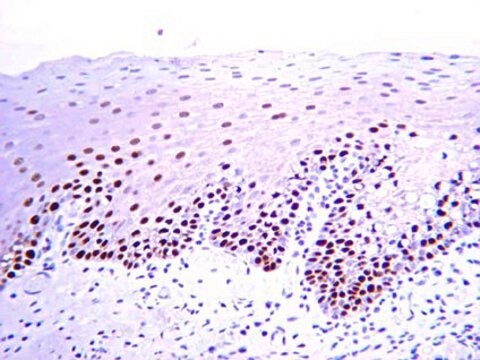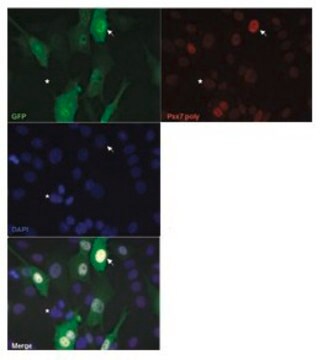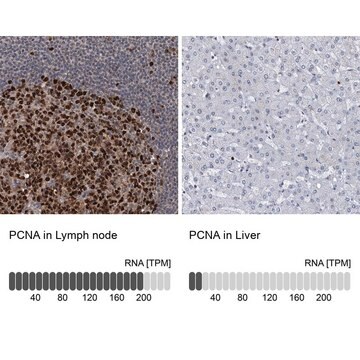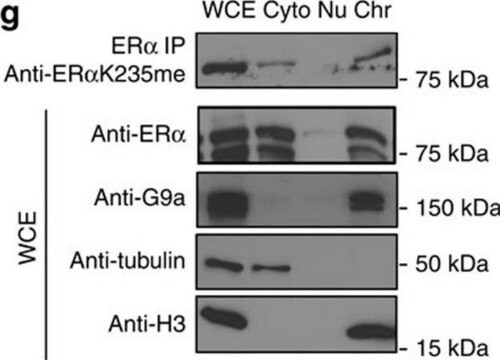SAB2701819
Anti-PCNA antibody produced in rabbit
affinity isolated antibody, buffered aqueous solution
Synonym(s):
cb16, fb36g03, pcna, wu:fa28e03
About This Item
Recommended Products
biological source
rabbit
Quality Level
conjugate
unconjugated
antibody form
affinity isolated antibody
antibody product type
primary antibodies
clone
polyclonal
form
buffered aqueous solution
species reactivity
zebrafish, (Japanese Medaka)
technique(s)
immunohistochemistry: suitable
western blot: 500-3000
NCBI accession no.
shipped in
wet ice
storage temp.
−20°C
Gene Information
zebrafish ... pcna(30678)
General description
Immunogen
Application
Anti-PCNA antibody has been used in the detection of proliferating cells by immunofluorescence.
Biochem/physiol Actions
Proliferating cell nuclear antigen (PCNA) controls the production of the leading and lagging strands, which are required for the duplication of DNA. It acts as a cell cycle regulatory protein. This protein regulates apoptosis. PCNA is also involved in non-replicative DNA synthesis events.
Features and Benefits
Physical form
Disclaimer
Not finding the right product?
Try our Product Selector Tool.
signalword
Warning
hcodes
Hazard Classifications
Aquatic Chronic 3 - Skin Sens. 1
Storage Class
12 - Non Combustible Liquids
wgk_germany
WGK 2
flash_point_f
Not applicable
flash_point_c
Not applicable
Certificates of Analysis (COA)
Search for Certificates of Analysis (COA) by entering the products Lot/Batch Number. Lot and Batch Numbers can be found on a product’s label following the words ‘Lot’ or ‘Batch’.
Already Own This Product?
Find documentation for the products that you have recently purchased in the Document Library.
Our team of scientists has experience in all areas of research including Life Science, Material Science, Chemical Synthesis, Chromatography, Analytical and many others.
Contact Technical Service